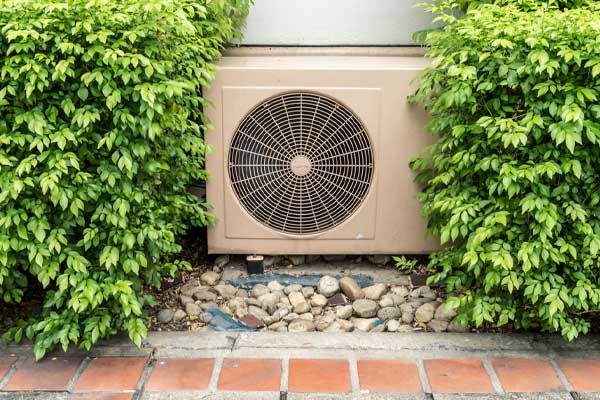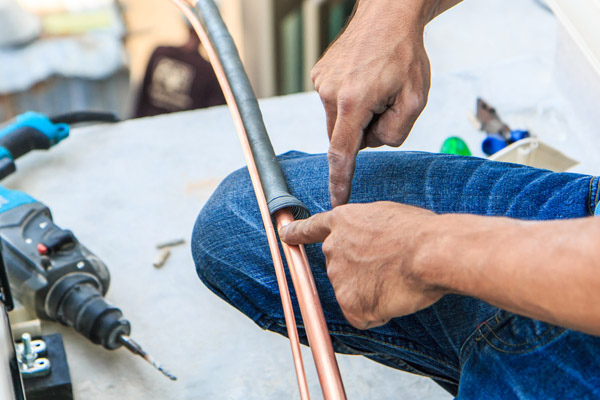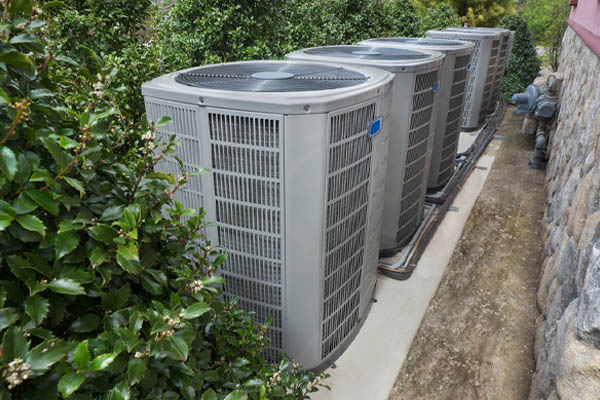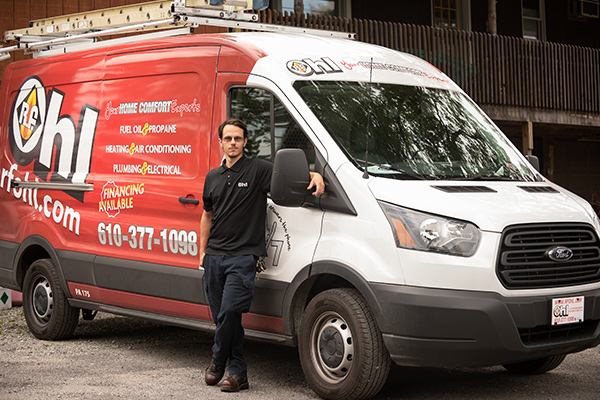
Air conditioners should have breathing space to enable airflow, resulting in better performance and a longer service life. Not only should HVAC technicians follow industry standards during an air conditioner installation, but homeowners should also be mindful of this outdoor unit throughout its lifespan. Landscaping and other items may get too close as time passes. Check the perimeter to give the correct space required for AC outdoor unit. This article discusses more on outdoor air conditioning unit clearance.
Outdoor Air Conditioning Unit Clearance: What To Know

The cooling system requires unblocked airflow in and around the outdoor AC unit. They cannot receive adequate air without proper clearance. This can result in the following:
- Lower AC Energy Efficiency: The air conditioning system will work harder to compensate for the insufficient air. However, this causes it to consume more energy and spike your energy bills.
- Sub-Optimal Indoor Cooling: The air conditioner cannot generate enough cooling power for your home. Occupants may still feel warm even with the air conditioner turned on.
- Air Conditioner Component Overheating: The hot air in the outdoor unit cannot escape quickly. The parts may overheat, so you may require HVAC repairs. Your equipment may also prematurely fail.
How Much Clearance Is Necessary Around An Outdoor Air Conditioning Unit?

The outdoor air conditioner’s job is to push the heat from inside the house to the outside. It can only be effective if the coils have sufficient airflow around them. The general rule of thumb is to clear a minimum of one foot around the unit. Several manufacturers may recommend more clearance space. Consult your HVAC contractor or check the owner’s manual for specific guidelines. The types of blockages in the immediate surrounding will also influence the minimum clearance needs. Here are several of the top concerns:
Construction Obstructions
These are walls, fences, or other structures around the property. They will block the airflow if they are made of solid materials. Therefore, placing the outdoor unit close to them isn’t a good idea. The air conditioner will work harder to cool your home. Long-term airflow restrictions can also cause damage to the compressor. Having at least a two-foot clearance between the outdoor unit and the obstruction is crucial. The distance makes it easier to pull air into the unit and cool the hot coils.
Landscaping Obstructions
Many people don’t like what the outdoor air conditioner looks like. They may feel like it clashes with the house’s design. They may even plant more shrubs and place potted plants around the outdoor unit to hide them. This can be aesthetically pleasing outside but can result in problems inside your home. Restricted airflow can cause poor performance, inefficiency, and component damage in your HVAC system. It would be wise to maintain a two-foot clearance around the unit. Homeowners should regularly trim the plants around the perimeter because they can grow quickly.
Mechanical Obstructions
These are outdoor AC units’ most problematic obstructions. Examples are clothes dryers, kitchen exhausts, and vents for heating equipment. Placing them too close to the unit can result in airflow issues. It can even be dangerous, which is the case for gas vents and oil tank fill valves. A notable distance is needed for safety. Professionals recommend at least four feet, but keeping them as far away as possible is best. HVAC installers will determine the most fitting space in another part of the property.
Outdoor Air Conditioner Unit & Overhead Clearance
Remember that the top of the unit is also essential. When the sides are clear, focus on what’s above the air conditioner. Many current models discharge hot air upwards. If there’s a blockage, the hot air will return down and cause the unit to overheat. Common reasons for this are debris like branches and dry leaves. Shrubs nearby can also grow so much that they cover the unit’s top. If decks are built above the outdoor AC, the decks may be the cause of issues at times. The space between the deck and the top of the unit may be insufficient. Decorative covers and low roof overhangs can also cause problems. It is recommended to have at least eight feet of overhead clearance.
Spacing Between Two Outdoor Condensing Units

Professional installers should consider the distance carefully if they own two or more outdoor units. The units can’t be placed too close to one another as this will impede their air intake. Some cases may see one unit pulling hot air from another unit, causing it to overheat. The air conditioner will find it difficult to cool the house under this condition. Therefore, having a minimum of four feet of space between outdoor units is crucial.
Outdoor Heat Pump Spacing
Heat pumps can effectively cool and heat your home when there are mild climates. The outdoor unit also requires enough clearance. Homeowners need to be vigilant during the cold season as ice and snow can cover it. The coils must always be above the snowpack. Make it a habit to remove snow around the heat pump to ensure peak system efficiency. There may be times when snow can get inside the unit, so it is necessary to clean it. You can contact an HVAC technician to assist you if you are wary of doing it yourself.
Site Inspection Before HVAC Installation

HVAC technicians will visit the site and find the ideal areas for the outdoor unit before installing it. They will familiarize themselves with the property layout to locate the possible challenges to the system’s operation. This will help them know the proper distance around the unit. Their findings will help them design and install the outdoor unit to achieve the best results.
Homeowners can ask their HVAC technician about clearance needs before the installation. When you take a more active role, you can learn more about it and help ensure there’s enough spacing. You are also less likely to experience expensive errors and performance issues.
Conclusion
To achieve a successful HVAC system installation, it is crucial to have sufficient AC clearance. Have certified professional AC technicians assist you so you won’t worry about problems down the road. Their expertise, careful planning, and outstanding execution guarantee the best possible outcome.
Call R.F. Ohl For Your Air Conditioning Requirements

R.F. Ohl provides exceptional HVAC services throughout the Lehigh Valley and the Poconos, Pennsylvania. Our professionally certified technicians are the best when it comes to providing you with excellent heating and cooling installations, replacements, tune-ups, and repairs. All our techs have the proper skills, knowledge, and experience to service your HVAC system accurately and promptly.
We guarantee the most competitive HVAC service prices in the region. Our maintenance services can increase your home’s energy efficiency and comfort and lower cooling costs. We can suggest the best budget-friendly solutions when you require an HVAC repair or replacement system. Schedule an AC tune-up or service appointment with R.F. Ohl today. All the work we offer comes with a guarantee. Call now and receive a free, in-home estimate.
Click here to contact us today or give us a call at (610) 377-1098 if you have any questions. Click the link to view our service area.
The post How Much Clearance Is Necessary Around an Outdoor AC Unit? appeared first on R.F. Ohl.
No comments:
Post a Comment